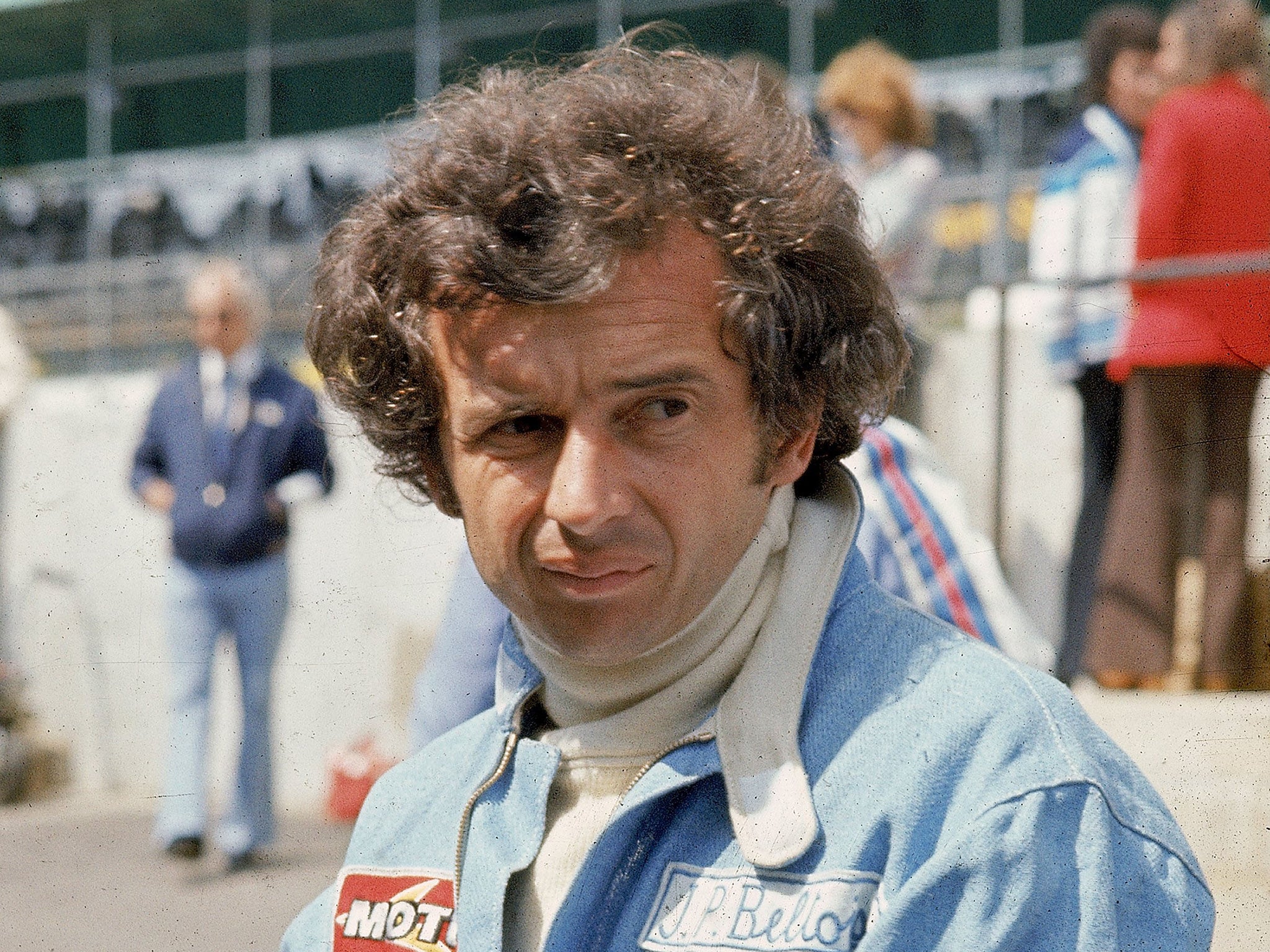Jean-Pierre Beltoise: Racing driver whose career suffered after a crash but who went on to win in torrential rain in Monaco
He managed to establish a successful racing career, but Beltoise was seen as a reliable journeyman rather than a title contender

But for an accident in the 12 Hours of Reims sports-car race in 1964, Jean-Pierre Beltoise might have become France's first Formula 1 world champion. A badly broken left arm left him slightly incapacitated thereafter – and though he managed to establish a successful racing career, he was seen as a reliable journeyman rather than a title contender.
The Parisian butcher's son began his career racing motorcycles and secured 11 national championships before switching to four wheels as a mechanic/driver with the eponymous René Bonnet team in 1963. He was immediately successful with the Champigny-sur-Marne company, winning his class and taking 11th overall at Le Mans that year. But the accident at Reims kept him off the tracks for six months.
Despite the handicap, his smoothness and speed attracted Matra, the missile company that had acquired René Bonnet's business. In Matra's F3 and F2 cars he won championship titles in 1965 and 1968.
In between, he won the prestigious Monaco Grand Prix-supporting race in 1966, the year he made his F1 debut with a class-winning eighth in an F2 Matra in the German GP. After two seventh-place finishes in the US and Mexican GPs in 1967, he scored a point with sixth in the 1968 South African GP before winning a non-championship race in the same Matra at Killarney the following week.
His first podium came in the Dutch GP, in Matra's full-blown 3-litre V12-powered car. Using the same Dunlop tyres as the race winner, Jackie Stewart, he left the field behind as he followed the Scot's Ford-powered Matra home. A series of decent drives earned him the No 2 slot alongside Stewart in Ken Tyrrell's Elf-sponsored team for 1969 as Matra temporarily withdrew, and though he could not beat the Scot, he finished second in the French GP and took thirds in Spain and Italy.
Back with Matra and their own V12-engined car in 1970, he was heading for victory in the French GP at Clermont-Ferrand until a puncture dropped him to sixth. He was third in Belgium and Italy and ran at the front in Austria, too, but was generally outshone by his teammate Chris Amon in 1971.
For the 1972 season he switched to the BRM team, and his day of days came at Monaco when, in torrential rain, he completely outclassed all the established wet-weather aces such as Stewart and the Belgian driver Jacky Ickx to record the only grand prix victory of his career. He followed that by winning the season-ending non-championship John Player Victory race at Brands Hatch.
He stayed with BRM in 1973, with mediocre results, but took a fighting second in South Africa in 1974 before the team declined.
Though he was the test driver for Ligier's new F1 effort, the race drive went to Jacques Laffite – and after that Monaco win, his other successes came in Matra's sports cars. In 1974 he won the Nurburgring, Watkins Glen, Paul Ricard and Brands Hatch world championship sports-car races with team-mate Jean-Pierre Jarier. He wound down his career in French touring cars, rallycross and ice racing.
He was no stranger to the cruel side of the sport; he was deeply saddened by the deaths in 1968 of Jim Clark at Hockenheim, where he himself won the race for Matra, and his close friend Jo Schlesser at Rouen, and in 1973 he saw his brother-in-law François Cevert die in a crash at Watkins Glen.
If Monaco was the apogee of his career, then the Buenos Aires 1000km sports-car race in 1971 was the nadir. Rashly he tried to push his stricken Matra back to the pits after running out of fuel, resulting in the death of rising Ferrari star Ignazio Giunti, who, unsighted, crashed into the back of the French car. Beltoise was suspended for his role in the tragedy. Cevert's sister Jacqueline, Beltoise's second wife, who would see their sons Anthony and Julien take up racing, too, offered the film-maker John Matthews a moving insight into her husband's pre-race state of mind for Matthews' film The Killer Years.
She remembered one outburst at Matra when he rounded on her, to the general embarrassment of their dining companions. "I just sat totally still, and there was total silence. Afterwards I knew I had to go upstairs to the bedroom. So I go in, really quietly, and Jean-Pierre's asleep. The next morning, he wakes up – 'Morning darling' – and I couldn't understand it. He'd forgotten it all. And he did this to me before every race, for eight years.
"He had to let himself go, and take out all his stress on me, and then the next morning, all was well. He'd be relaxed at the track, not stressed at all. And I'd be totally fed up. I'd be in a panic every time because I didn't know what I'd done, or said."
DAVID TREMAYNE
Jean-Pierre Maurice Georges Beltoise, racing driver: born Boulogne-Billancourt, Paris 26 April 1937; married Jacqueline Cevert (two sons); died Dakar, Senegal 5 January 2015.
Subscribe to Independent Premium to bookmark this article
Want to bookmark your favourite articles and stories to read or reference later? Start your Independent Premium subscription today.

Join our commenting forum
Join thought-provoking conversations, follow other Independent readers and see their replies